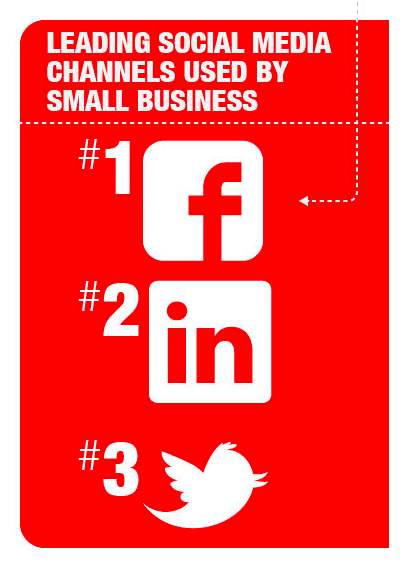
Slow and Steady Wins the Social Media Race
Social media is growing at an impressive rate. It seems like every week a new app, website or platform is created that connects friends, acquaintances and strangers, or allows broad-spectrum posting of text, images or video. And while the majority of these new solutions are geared towards the individual user, several have become every day tools of modern marketers. But, while Facebook, Twitter, Instagram and LinkedIn have all proven to be important and useful arrows to have in the marketing quiver, often times businesses will make the mistake of grabbing hold of the latest social media tool and swinging wildly. According to Steven Strauss, small business expert and author of “The Small Business Bible,” 53% of small businesses still struggle to use social media effectively.
Back in 2008, while working for a mid-size PR agency based in Washington D.C., Twitter was not yet a year old, but was gaining popularity. Our CEO came out of his office and stopped at my desk. “Eli,” he said, “I need you to go online and create a Twitter account for our company and start tweeting.” I stared back at him blankly. I had signed up for a personal Twitter account and was still just dipping my toes in the water of a platform, whose potential had yet to become clear to me. The CEO’s view of this tool that he barely understood was that he needed to be using it to remain current. In the end, he was right – Twitter became and still is a powerful tool for marketing your company and brand. But at the time, it was too new to be used effectively.
Facebook, began as an exclusively college and individual focused networking site. Overtime, it has developed into a sounding board for individuals, companies, brands, non-profits and various causes and groups. But had a company found a way into Facebook in the early days, and started friend requesting users at random, they’d have come under a lot of attacks and likely lost potential customers rather than gained any. Facebook needed time to evolve, and once it became global and open, companies were able to fold it into their everyday marketing tactics.
So, how do you know when a new social media tool is ready to use and how do you approach it?
1. Wait: Give it time for the initial excitement over the new social app or site to die down. You want to allow time to evaluate if the tool has staying power or if it will simply be a flash in the pan. Lauren Simonds wrote a recent article on Time.com about business growth and social media including information from Steven Strauss. Simonds states every business should start small: “Run a poll on your website and find out where your customers congregate: Facebook, Pinterest, LinkedIn, Twitter—or maybe even YouTube. Pick one, and focus on it until you’ve mastered that platform. Then, if your customer base warrants it, you can consider expanding to another platform.”
2. Strategize: Once you’ve decided you want to add the new tool to your social arsenal, build a strategy that outlines how specifically you intend to use the tool, and how it will fit in with your current social media marketing efforts.
3. Listen & Converse: Most social media is centered around large-scale interaction. That means that following key influencers is the first step to becoming an influencer yourself. So before you begin posting or sharing your own content, share the content of others and engage with them. This will lend you legitimacy and allow you to build an audience over time. Once you begin posting for your own business, Strauss recommends using the 80/20 rule to keep information focused on your customers. “Eighty percent of your tweets or posts should be about them,” he says. The other 20 percent needs to be valuable, shareable content customers will want to spread – Word of mouth marketing!
4. Analyze: According to a post, “Patience is a Virtue – Especially in Social Media” on the blog Your Social Move, “If you don’t slow down and take the time to analyze your previous efforts, you won’t know if you are headed in the right direction or if you need to stop, reassess and go a different way.” Marketing is all about adjusting your tactics to fit your customers needs and interests. Social marketing is the most moveable of all your tactics because it grows overtime. If you don’t analyze the success of your new tool, you won’t know how to get the most out of your efforts. Simonds and Strauss state that “while social media marketing is one of the most affordable ways to build your business, don’t forget to track your efforts and keep tabs on what your get back on your investment—of both money and time… if you’re not getting results—revenues aren’t going up, or worse yet, they’re dropping—it means that you’re not engaging effectively and it’s time to reassess your methods and try a new social approach.”
Want to know how much time and money small businesses are currently spending on social media? Check out our infographic for more details.
Social media marketing shows no signs of slowing down, and with shiny new tools launching all the time, it’s important as marketers to approach each of them critically so you have time to evaluate and then integrate them into your brand. Not every new app or site will fit with your communications, but when you find the one that does, a strategic and patient approach will pay huge dividends in the future.
© 2013 – 2018, Contributing Author. All rights reserved.





This is such a great suggestion. It is so easy to want to jump right into any type of new Marketing technique and Social Media seems to be one of the most effective yet most evolving platform. I agree that it is important to watch the market in order to determine what method will work best for your company. Thank you!
that rubix cube would be impossible to beat. just saying